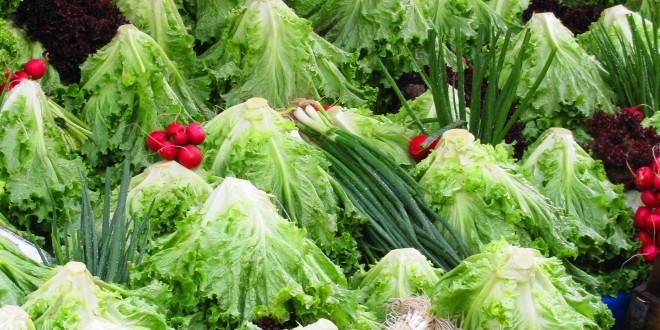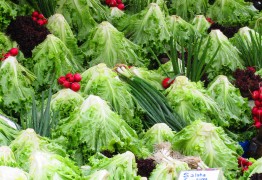I was never one of those folks who tried to grow her own fruits and vegetables or decided to eat only foods that were organic or vegetal. The natural foods movement came along at nearly the same time as the women’s movement, and the message I plucked from all that was in the air in those days was to get busy and develop myself professionally. That dictum didn’t mix well with putting a great deal of extra effort into my diet. A nutritionist by training, I ate widely and moderately, and reasoned that normal digestive acids would neutralize any additives, preservatives or irradiated matter in my diet.
In my twenties I did, however, set out to make fresh daily meals. That was mainly because I enjoyed didn’t like the taste of most ready-made food. In graduate school I had eaten most dinners out, and I decided it was ultimately too expensive and fattening.
In the past few years, perhaps out of increasing awareness of my mortality, I’ve been pleased to see more pesticide- and additive-free food in American supermarkets. I am happy to buy these, convinced they are beneficial—and fortunate to be able to pay the higher prices they almost always command. I think I eat pretty well these days. My most egregious food offense is the ingestion of about a half can of Diet Coke a day. When my kids are around, they chide me about this.
I moved to Turkey in 2010 during the height of the Great Recession—and the height of a U.S. obesity epidemic. I began sampling Turkish foods, sticking mainly with familiar categories: salads, kebabs, rice dishes, soups. I noticed that Turks eat a wide range of cooked vegetables, but preferring my veggies raw, I hesitated to try them—or really any new vegetable. But sometimes circumstances forced me to be more open-minded.
One such occasion occurred this past Christmas season at the home of Turkish friends. A tasty-looking bowl of yogurt was on the table, and I helped myself. (Turkish yogurt is a richer version of the yogurt we Americans typically buy. In the States it is sold as Greek yogurt.) I realized there was more to the dish than yogurt, and when I inquired, I was told that it contained grated celery root, walnuts and fresh garlic. Grated celery root? Hmm. I had tried to buy celery for soup here, but could only find dirty, grapefruit-sized bulbs, generally with only a few small strands of celery attached at the top.

I was told it was ciris, the stem of the foxtail lily, and that it is found in central and southern Turkey for only three weeks each spring. I had to applaud the Turks for their thrift and ingenuity. Below it is pictured raw.
As nothing else was in front of me, I had no choice but to eat. Mildly spiced and combined with lentils and bulgur, it turned out to be quite tasty.
Slowly I am beginning to open my eyes to other Turkish foods. A popular appetizer here called semizotu involves yogurt and purslane, a plant with small, round leaves that is considered a weed in the U.S.
The stem of the glasswort plant is a treat here. Called borulcesi, it is typically cooked and then served cold with lemon.
It’s worth repeating that I have been astonished to see teenage boys here enthusiastically digging in to large plates of semizotu, borulcesi and other kinds of cooked vegetables. This is something I have never seen in the U.S.—and do not expect to see any time soon.
Turks also eat roots in a variety of ways. Crocus roots are stewed and fried, and also made into a milky dessert. Orchid roots are dried and grated, then combined with milk and sugar and cinnamon for a scrumptious winter drink called sahlep.
Today at the greengrocer, I took a photo of some of the more common roots here, among them parsnips and kohlrabi. Aren’t the colors lovely?
I know that parsnips and turnips used to be more commonly eaten in America. It occurred to me that, especially during times of economic crisis, we should revive some of the thrifty, sustaining recipes of our ancestors. Eating this way would provide a fiber and nutrient boost and help take the place of junk food.
I have now mastered four all-natural Turkish recipes, and have my eye on a couple of others. I chuckle to think that in my old age, I am becoming either my grandmother or a hippie.
“>—————————————————————————————————————–
In a previous blog, I promised to mention sheep’s intestines and dove-shaped sandwiches, so here goes.
A popular, inexpensive sandwich here is called kokorec, and involves the small and large intestines of lamb,layered on a spit and slowly roasted.

kokorec tasty, but a little chewy, kind of like calamari.
Kumru is another sandwich. Its name derives from the Turkish word for “dove,” which it is said to resemble in shape.
This item is pretty conventional, consisting of layers of spicy Turkish beef sausage and salami, and topped with mild, melted cheese. It is both salty and tasty. I think kumru would go over very well in the States!








The Chinese, as you know, do not let any part of the animal go to waste, so it is common to find tripe, kidney, brains, and intestines on the menu. Because of mad cow disease, I draw the line at brains, but I’ve tried the others. Textures are a little foreign, but OK. However, it seemed to me that pig intestine tasted a little too much like I imagined the contents of that intestine might have tasted during the pig’s lifetime, so I will skip it next time.
And BTW my own teenage kids did eat veggies—as long as they were brightly seasoned and not cooked to death. I think the problem in America is that veggies are often served as bland, steamed filler. Ugh.
This comment has been removed by the author.